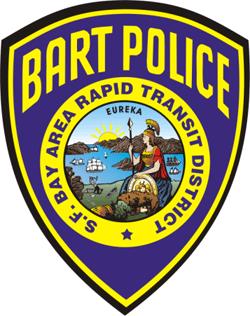BART, under public pressure, has finally released a video that shows part of the shooting of Charles Hill. Zusha Elinson of the Bay Citizen continues to do great work on this story (which the Chron didn’t even put on the front page). He’s got a good analysis, but after watching the video about 20 times, with as much stop action as my computer could give me, it seems pretty clear that:
1. The officers made no credible attempt to calm Hill down or de-escalate the situation. The shooting happens only 25 seconds after the cops arrived on the scene.
2. There’s no evidence on the video that Hill threw a bottle at the officers. It does appear that he threw what BART identifies as a four-inch knife, but it didn’t come anywhere close to the cop you can see in the video. And it appears, from my viewing (and Elinson’s) that the knife was thrown AFTER the shot was fired. Which could mean the guy was holding the knife and it flew out of his hands as he got hit — or it could mean that once he realized he was shot, he heaved it toward the officer.
3. Hill was not anywhere near close to the officer (and thus couldn’t have been credibly threatening to stab him) when the shot was fired.
As an aside: It’s clear that a knife can be a deadly weapon. A cop being attacked by a knife has the right to defend himself with lethal force. And a knife that it thrown with the right degree of skill and accuracy can be every bit as lethal as a bullet. But in this case, Hill was visibly intoxicated (which was why the cops were called in the first place). He may have been an expert knife-thrower (although it appears he wasn’t — the knife clattered away several feet from the officer). But I can tell you, because I’m into this sort of thing, that’s it’s very difficult to throw a knife well from even a few feet away. It takes years of practice to get good with a perfectly balanced knife, one that’s designed to be thrown. If the “four inch knife” Hall threw was a pocket knife or any kind of knife with a heavy handle, the difficulty would increase dramatically; those knives tend to travel in an unbalanced spin and wind up hitting the target handle-first (and thus fairly harmlessly). And I don’t know very many people who can throw any sort of knife with any degree of accuracy when they’re drunk.
Again: The cops had no way of knowning what this guy’s skill level was. He could have been a ninja assasin able to stick a dull pocket knife in someone’s heart from 50 feet away blind and dead drunk. I’m just saying: The level of threat here was a lot lower than, say, a man holding a guy, or a man holding a knife a foot away.
San Francisco cops are required to undergo training to deal with people who are mentally ill, unstable, drunk or on drugs. Part of that training involves trying to talk the person down, trying to avoid a situation where any sort of force is necessary. That clearly didn’t happen here.
One more note: When I was working on another BART shooting story years ago, I read a book on police use of force and it had an interesting comment. I quote from my prior story:
In Modern Police Firearms, a textbook on law-enforcement procedures, Professor Allen P. Bristow of California State University, Los Angeles, writes that deadly force should be used to stop a fleeing felon only when “he cannot be contained or captured” through other means. Further, Bristow notes, an officer considering deadly force should ask the following question:
“Is the crime this suspect is committing, or are the consequences of his possible escape, serious enough to justify my taking his life or endangering the lives of bystanders?”
In this case, the guy wasn’t fleeing, but the question remains: Was his alleged crime serious enough to justify taking his life?

